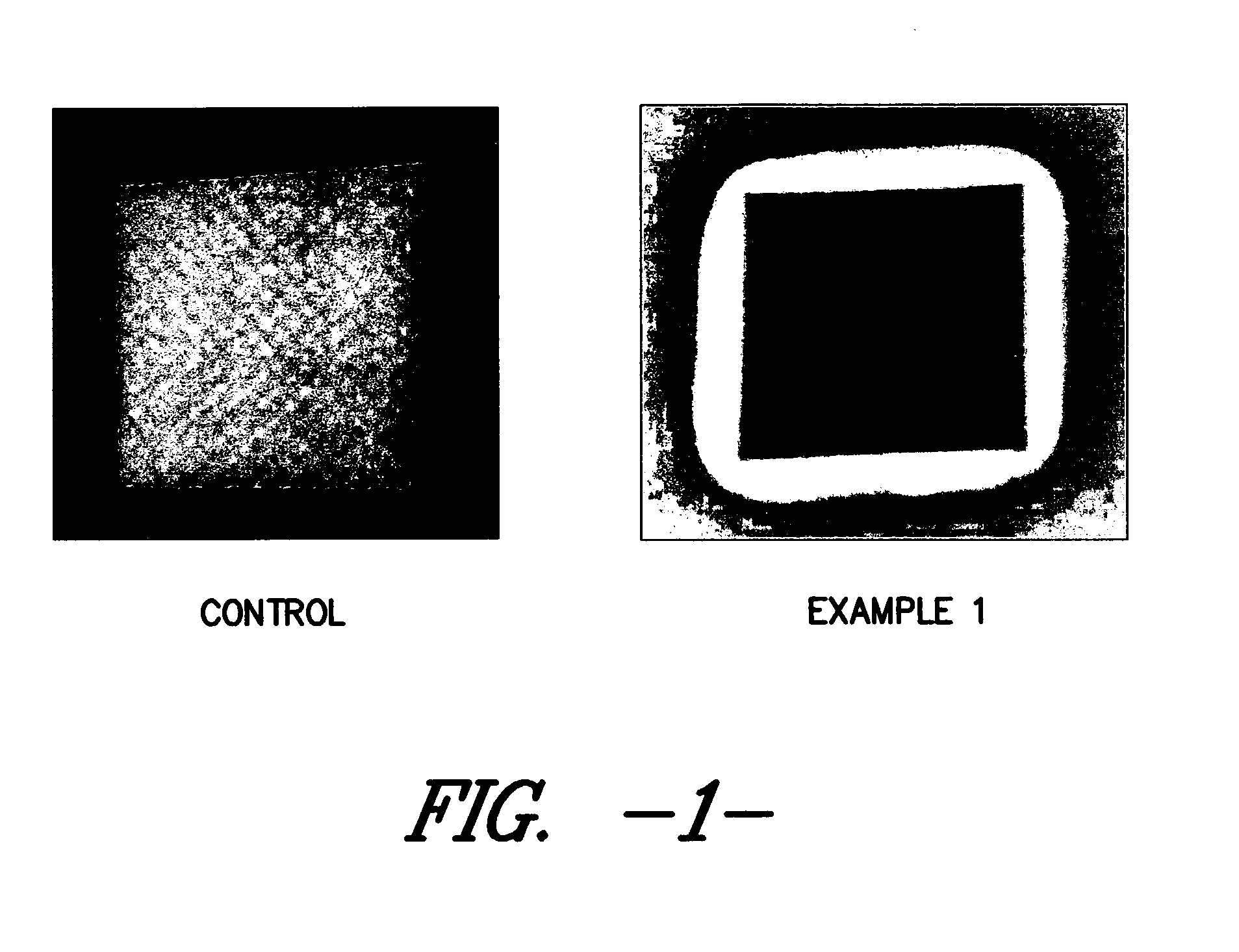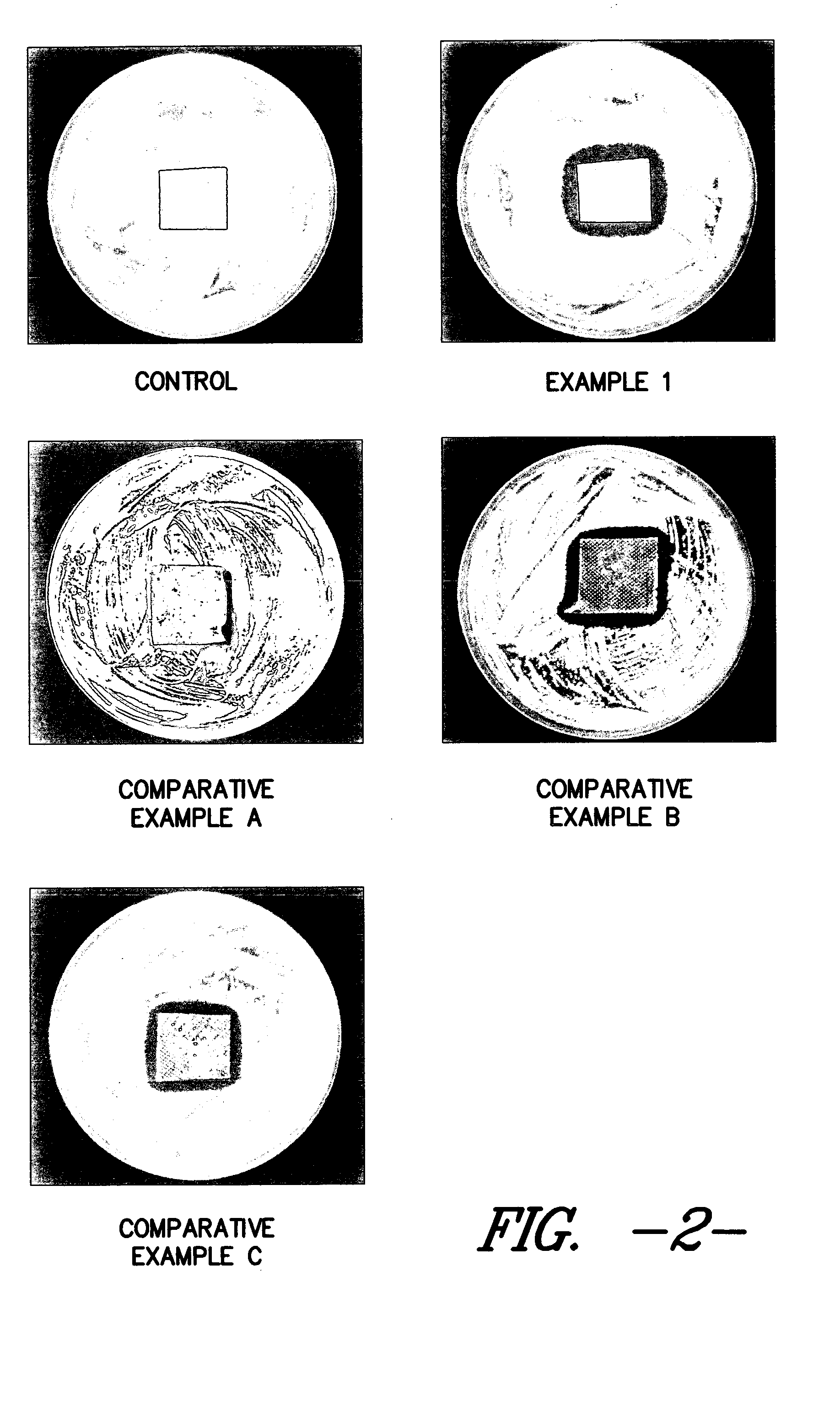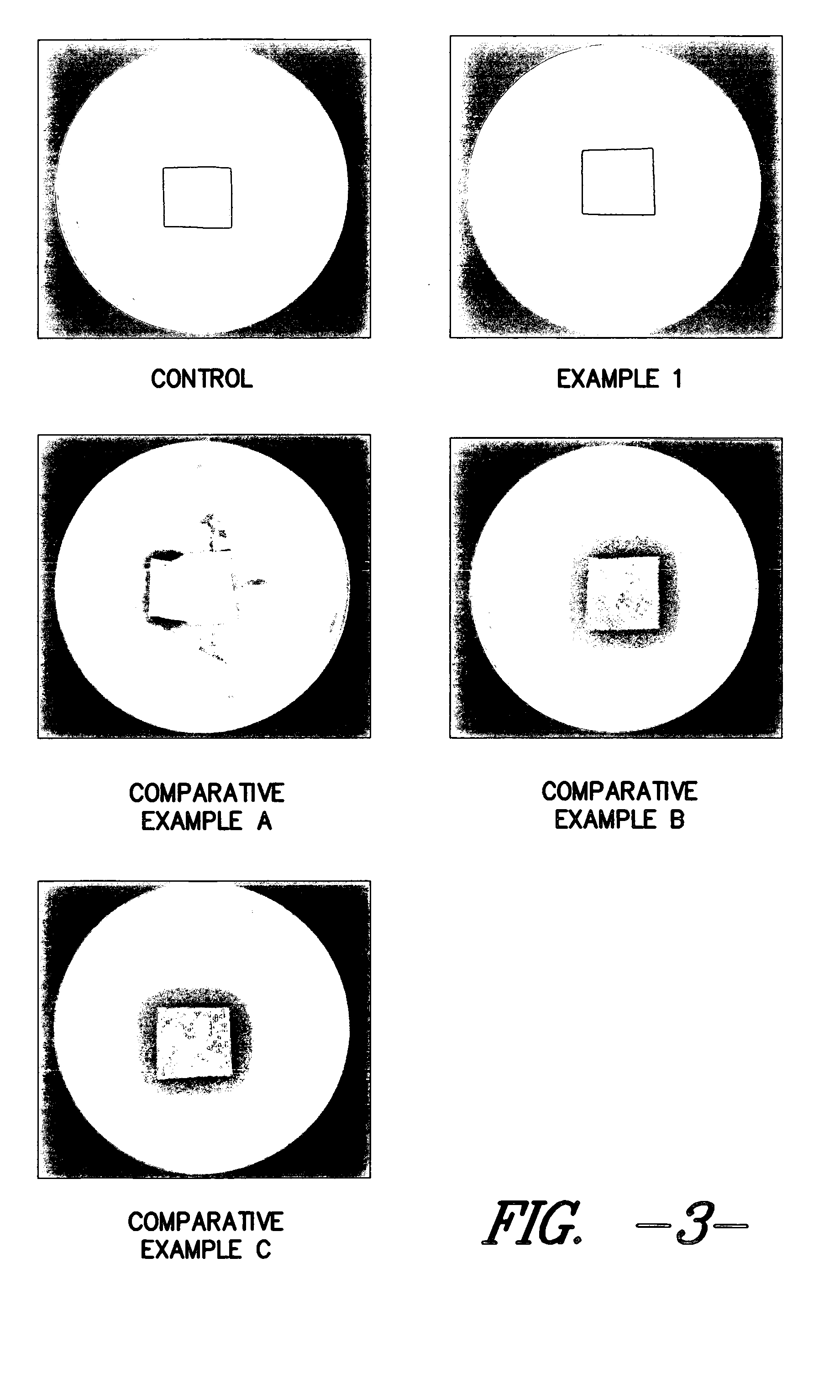Silver-containing wound care device
a wound care device and silver technology, applied in the field of silver-containing wound care devices, can solve the problems of inhalation of silver into the wound, causing undesirable odor, causing infection of the wound, and causing additional bacterial and/or fungal growth
- Summary
- Abstract
- Description
- Claims
- Application Information
AI Technical Summary
Benefits of technology
Problems solved by technology
Method used
Image
Examples
example 1
Evolon® Nonwoven Fabric
[0060]
AmountComponent(parts)Witcobond 293 (polyurethane binder)75AlphaSan ® RC 2000 (antimicrobial agent,10010% Ag)Lubril QCJ (ethoxylated polyester, wetting agent)39Freecat MX (magnesium chloride,2color stabilizing agent)
example 2
Evolon® Nonwoven Fabric
[0061]
AmountComponent(parts)Witcobond 293 (polyurethane binder)74AlphaSan ® RC 2000100(antimicrobial agent)Lubril QCJ (ethoxylated polyester, wetting agent)39Freecat MX (magnesium chloride,20color stabilizing agent)
example 3
Evolon® Nonwoven Fabric
[0062]
AmountComponent(in grams)Water961.1028Witcobond 293 (polyurethane binder)331.6750AlphaSan ® RC 2000 (antimicrobial agent)444.4444Lubril QCJ (ethoxylated polyester, wetting agent)173.8888Freecat MX (magnesium chloride, color stabilizing agent)88.8888
PUM
| Property | Measurement | Unit |
|---|---|---|
| thickness | aaaaa | aaaaa |
| thickness | aaaaa | aaaaa |
| thickness | aaaaa | aaaaa |
Abstract
Description
Claims
Application Information
 Login to View More
Login to View More - R&D
- Intellectual Property
- Life Sciences
- Materials
- Tech Scout
- Unparalleled Data Quality
- Higher Quality Content
- 60% Fewer Hallucinations
Browse by: Latest US Patents, China's latest patents, Technical Efficacy Thesaurus, Application Domain, Technology Topic, Popular Technical Reports.
© 2025 PatSnap. All rights reserved.Legal|Privacy policy|Modern Slavery Act Transparency Statement|Sitemap|About US| Contact US: help@patsnap.com



